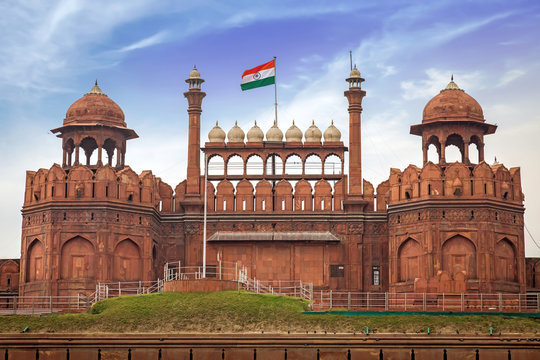
Red Fort (Lal Qila)
The Historic Icon of Delhi
| Location | Netaji Subhash Marg, Chandni Chowk, Old Delhi, Delhi 110006, India |
|---|---|
| City | Delhi |
| Country | India |
| Coordinates | 28.6562°N 77.2410°E |
| Architect | Ustad Ahmad Lahori |
| Construction Started | 1638 |
| Completed | 1648 |
| Historical Significance | An emblem of India's rich history and the main center of India's Independence Day celebrations. |
The History of the Red Fort (Lal Qila)
The Red Fort, also known as Lal Qila, is an iconic historic fortress located in Old Delhi, India. It was built between 1638 and 1648 under the reign of the Mughal Emperor Shah Jahan. The fort was designed by the renowned architect Ustad Ahmad Lahori, who also designed the Taj Mahal.
The Red Fort gets its name from the red sandstone used in its construction, giving it a distinctive appearance. It served as the main residence of the Mughal emperors for over two centuries.
Today, the Red Fort stands as a symbol of India's rich history and cultural heritage. It is a UNESCO World Heritage Site and is celebrated for its stunning architecture, including its iconic Lahori Gate, Chatta Chowk (marketplace), Diwan-i-Am (Hall of Public Audience), Diwan-i-Khas (Hall of Private Audience), and the beautiful Moti Masjid (Pearl Mosque).
The Red Fort holds special significance in modern India as it is the site where the Prime Minister of India hoists the national flag on Independence Day, a tradition that has been carried on since the country's independence in 1947.
In conclusion, the Red Fort is not only a historic monument but also a symbol of India's rich cultural and political history. It continues to be a source of pride and an enduring symbol of the country's independence and unity.
Facts About the Red Fort (Lal Qila)
- The Red Fort, also known as Lal Qila, is located in Old Delhi, India.
- It was built between 1638 and 1648 under the rule of Mughal Emperor Shah Jahan.
- The fort is constructed primarily from red sandstone, giving it its distinctive red appearance.
- Architect Ustad Ahmad Lahori, known for designing the Taj Mahal, designed the Red Fort.
- It served as the main residence of Mughal emperors for more than two centuries.
- The Red Fort is a UNESCO World Heritage Site and an iconic symbol of India's history and culture.
- It is the site of India's Independence Day flag-hoisting ceremony, a tradition since 1947.
- The fort's impressive architecture includes the Lahori Gate, Chatta Chowk, Diwan-i-Am, Diwan-i-Khas, and the Moti Masjid.